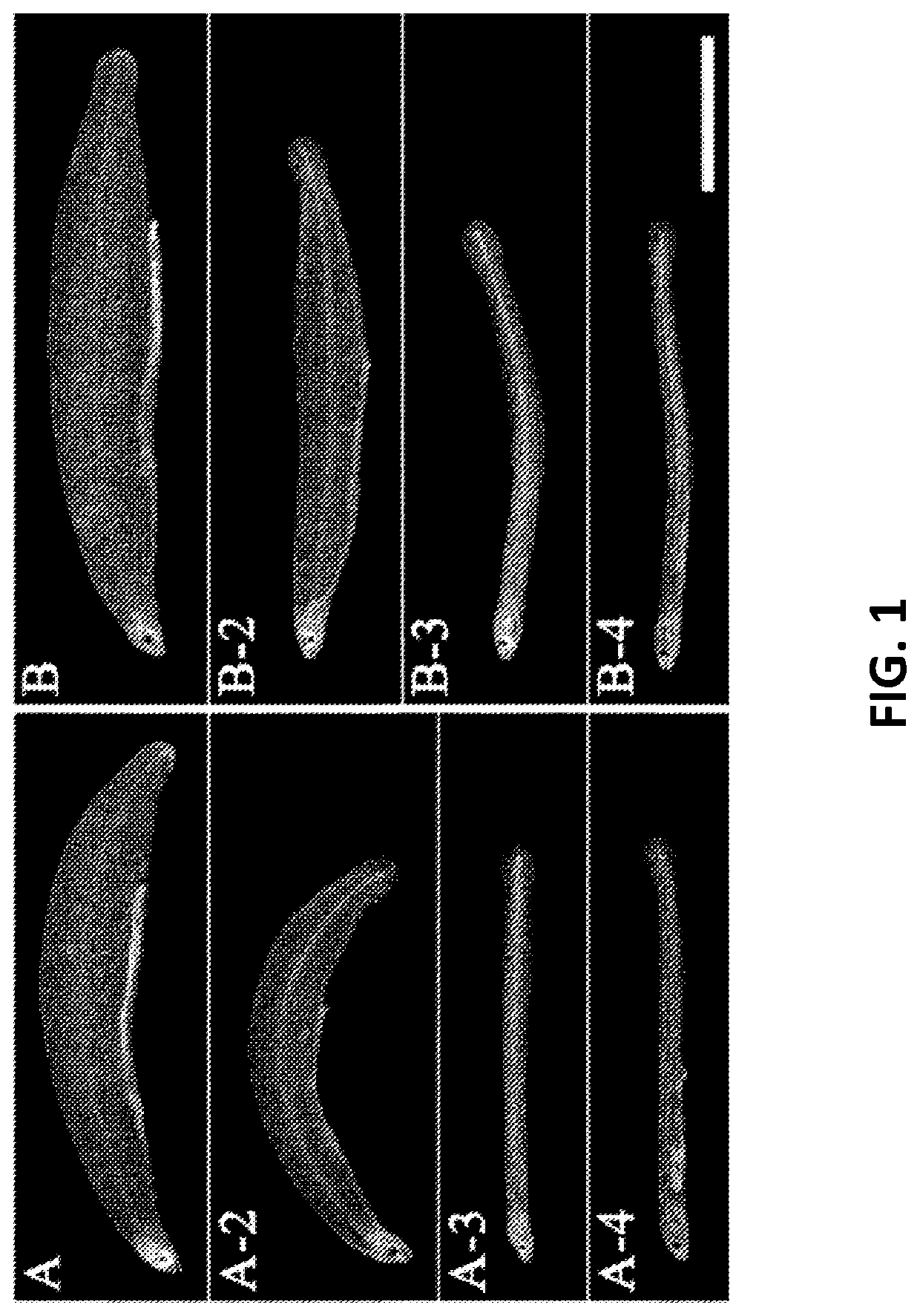Breeding water for anguilliformes and method for rearing anguilliformes
a technology of anguilliformes and water, which is applied in the field of breeding water for anguilliformes and the method of rearing anguilliformes, can solve the problems of reducing the survival rate, increasing the production cost, and difficult to produce glass eels as seeds, so as to shorten the breeding period
- Summary
- Abstract
- Description
- Claims
- Application Information
AI Technical Summary
Benefits of technology
Problems solved by technology
Method used
Image
Examples
examples
[0058](Preparation of Leptocephali 1)
[0059]Anguilla japonica leptocephali hatched from fertilized eggs obtained by artificial maturation and raised using a conventional feed based on dog fish eggs (see Non-Patent Literature 1) were used. A 10-L circular acrylic aquarium was prepared. Seawater was poured into the aquarium to make a volume of 5 L. The number of eels leptocephali placed in the aquarium was about 200. Anguilla japonica leptocephali were acclimated to the aquarium, and then a feed equivalent to 3 mL was administered to the bottom surface of the aquarium with a pipet to start feeding. During the feeding period, water was stopped for 15 minutes to perform feeding. After a lapse of 15 minutes, the food remaining on the bottom surface was washed away at a flow rate of 0.5 to 0.6 L per minute. The above operation was repeated every two hours and performed a total of five times. The feeding time was scheduled at 9:00, 11:00, 13:00, 15:00, and 17:00. After feeding five times, t...
example 2
[0067](Preparation of Leptocephali)
[0068]From leptocephali that had reached 129 days old, larvae having a total length of 29.8 to 40.6 mm were selected, and the present invention was performed.
[0069]Example Results: The results of the example are shown in Table 2 and FIG. 1. Juveniles were successfully produced from leptocephali having a total length 36.6 mm or more. However, with respect to leptocephali having a total length of 36.4 mm or less, although some of them reached stage 4, the metamorphosis did not progress smoothly, and they died during induction or did not gain the food intake ability. From above, it is considered that the threshold for leptocephali capable of seed production exists around a total length of 36 mm, and it turned out that when leptocephali that have reached a total length of 37 mm or more are prepared, and the present invention is performed, Anguilla japonica seeds can be produced. In addition, it turned out whether seed production using the present inven...
PUM
 Login to View More
Login to View More Abstract
Description
Claims
Application Information
 Login to View More
Login to View More - R&D
- Intellectual Property
- Life Sciences
- Materials
- Tech Scout
- Unparalleled Data Quality
- Higher Quality Content
- 60% Fewer Hallucinations
Browse by: Latest US Patents, China's latest patents, Technical Efficacy Thesaurus, Application Domain, Technology Topic, Popular Technical Reports.
© 2025 PatSnap. All rights reserved.Legal|Privacy policy|Modern Slavery Act Transparency Statement|Sitemap|About US| Contact US: help@patsnap.com

